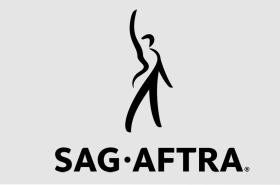
EXCLUSIVE: “I also was just in awe of the man that he was and what he gave us, so that was actually something that helped me a lot through those first two weeks,” SAG-AFTRA president Gabrielle Carteris says of her predecessor Ken Howard and the aftermath of his death in late March that saw Carteris, the former union Executive Vice President, take the reins.
Elected on April 9 to fill out the rest of Howard’s second presidential term, the former 90210 actress and longtime labor activist was no newbie to the upper echelons of the now-melded actors guild, despite the circumstances that led to her sudden elevation. The ex-LA Local co-president and National Board member had been the second-highest elected official at the union since she was first voted in to the powerful EVP spot at the inaugural SAG-AFTRA Convention in September 2013. Running again on Howard’s Unite For Strength slate, Carteris was easily re-elected EVP in 2015.
In her first major interview since becoming SAG-AFTRA’s president, Carteris spoke with Deadline about the day Howard died, the TV commercial contract she was negotiating as co-chair at the time and what the White Shadow actor meant to her personally. Preparing for next June’s expiration of the union’s current three-year film and TV contact with the Alliance of Motion Picture & Television Producers, Carteris also discussed how issues of gender equity, diversity and the very personal matter of workplace safety are priorities for her going forward. And, while circumspect, in this year of a historic race for the White House, the first solo female president of the more than 116,000-active-member SAG-AFTRA also touched on whether a full presidential term of her own is in the cards.
DEADLINE: What was it like when you learned Ken Howard had died?
CARTERIS: First of all, I was very sad. I was in the middle of negotiating one of our largest contracts at the time, the commercials contract. I was co-chairing that at the time, and during the time of negotiation is when I was informed that Ken had passed, and I was absolutely shocked. The first thing I did was that afternoon was immediately got on a plane and came back to Los Angeles.
My biggest concern was that in this moment when Ken had passed, I didn’t want there to be any disruption with the membership and the work that we were doing, because that’s a priority, so I made sure to reach out to all the national presidents to call. I spoke to people in the industry, letting people know that we’re working and moving forward.
DEADLINE: With Ken being the first solo president of the combined union, this was the first time a succession mechanism had to be put in effect. How well did you feel prepared to take over, even if it was only in the interim?
CARTERIS: Well, Ken and I work very closely together, so you have to remember I was the EVP for the last three years. And before that I was the co-President of the Los Angeles local, so I’ve been in service for a while, but being the EVP and working so closely with Ken already gave me a perspective on the job of the presidency.
DEADLINE: And personally?
CARTERIS: For me, I had just lost not only a great leader, but also a good friend. But the negotiations, when I left, they had continued, and I knew that even with my being sad, I knew that there was work that had to be done, and so the negotiations continued. I went back, finished the negotiations, and we were fortunate to have a successful negotiation. And after that, I was so happy because I thought if Ken was sitting there, looking at us at that moment, he could be proud to know that we had been successful in something that was so meaningful to the members.
I also was just in awe of the man that he was and what he gave us, so that was actually something that helped me a lot through those first two weeks. I continually was just reaching out and reaching out, and then we had the elections, and I was very honored to be able to come into the presidency.
DEADLINE: You are the first female solo president of SAG-AFRTA, but obviously not in a way you probably anticipated. How have you found the response to your elevation and then election to serve out the rest of Ken’s second term?
CARTERIS: I have to be honest, the members have been really supportive to my leadership, and so that made it a much easier transition of post because I was not doing it alone, you know?
So, the process has been now me just jumping off from that and just looking at the big picture about where we’re at as the union. It is a different thing to be in the position of the president — how do I engage with the members in an even more meaningful way? How do I go and connect with any industry, looking at the labor movement, what is my message, all those things, how I bring it all together?
DEADLINE: It seemed in many ways, the relationship you had with Howard after you became EVP was a bit like a prime minister to his president. Is that similar to how things are with current EVP Rebecca Damon?
CARTERIS: Every relationship’s different, so my relationship with Ken was very close, and we did a lot of work together, Now, I have a great EVP in Rebecca and I think that our leadership is great. I’m doing major reach-outs to all of our leadership to make sure that they’re involved and connected and doing the work that’s necessary for the members.
DEADLINE: From that reaching out, you must be aware that with the top three elected positions at SAG-AFTRA now filled by women, one of the expectations — especially going into the next round of big negotiations next year — is to tackle the issues of gender equity and inclusion in the industry.
CARTERIS: First of all, these issues aren’t new. These issues of gender equity and diversity have been ongoing conversations throughout the decades. I remember even when I was just starting in the business in the 1980s. It’s not just Hollywood’s problem. This is systemic. It’s in our country, so what happens in Hollywood is that everything’s just magnified because it’s out there in the public.
My interest now is in not just gender equity but inclusion for all in an ongoing conversation. My interest is really to activate it. How do we make it so? How do we find that equity in pay? How do we make sure that protection for all, that people have access to work? When you look at Jennifer Lawrence or you see Patricia Arquette who spoke out at the Oscars in 2015, talking about pay equity — it’s time.
DEADLINE: It wasn’t a big part of the last contact talks in 2015, so will you be talking about gender equity across the table in negotiations next year?
CARTERIS: While you know how important this issue is to me, it’s way too early to talk about what our discussion points and bargaining proposals will be.
I will say that equity overall is an important issue and one we are constantly looking at. In a perfect world, the entertainment and media industry and the content on our screens would reflect the true American scene. My hope is that we can help encourage the industry to embrace true diversity in all categories — gender, ethnicity, ability, age. We want inclusion and equal opportunities for all and pay parity for women who work above our contract minimums. Minimums that are, I will point out, the same for men and women — for all performers. Equal pay for equal work is a fundamental concept of labor agreements.
DEADLINE: So, what are the top challenges facing labor in Hollywood today?
CARTERIS: I can’t speak for all labor organizations, but I can tell you that our members are confronted with a changing paradigm. They know their work is different and they are trying to understand why that is so. Rapidly evolving technology and experimental business models are having an impact and I think are areas of real interest for us.
Regardless of the challenges, we are all so privileged to be a part of this industry and our focus will be on ensuring that SAG-AFTRA members can continue to make a living doing the work they love. I would also say that diversity continues to be an issue — in front of the camera, behind the camera and in the boardroom and the meeting room. We can and must do more to level the playing field for all.
DEADLINE: A very big issue for your members is healthcare, despite promises during the 2012 election to meld SAG and AFTRA and elections afterwards, it took almost five years to bring the two union plans together, set for January 2017. Why the long wait when it was hitting some members very hard as they risked losing or lost benefits?
CARTERIS: Well, first of all, I’d say that it took exactly as much time as it had to take because we wanted the process to be responsible, right? It’s really complicated and we wanted to make sure to do the best we could for the most amount of members, and I think that that process takes time.
I don’t want to look at it as time, but I want to look at it as results. The results, we came together, we merged our unions because we found, as members, performers, working in front the camera and behind, that our earnings were being split and that we were not able to go and necessarily take care of our families, and by us taking the time, merging the unions, going through the process the trustees went through to go and make sure that we had a health plan.
We have around 65,000, between members and their family participants — that’s how many people we’re touching as a result of this merger of the health plan. How tremendous is that, when we see health plans and the health industry changing within our country, to know that we’re able to do that? I’m glad, and I’m proud of the work. I know that it’s been hard, and took time, but I have a deep respect for the work that went into this.


